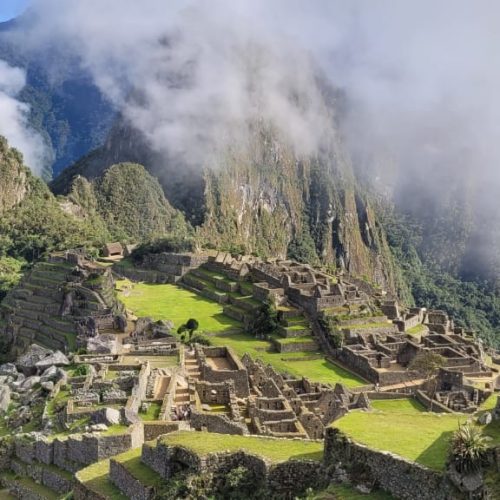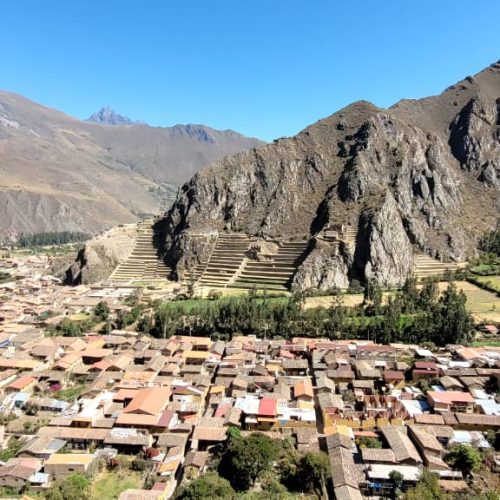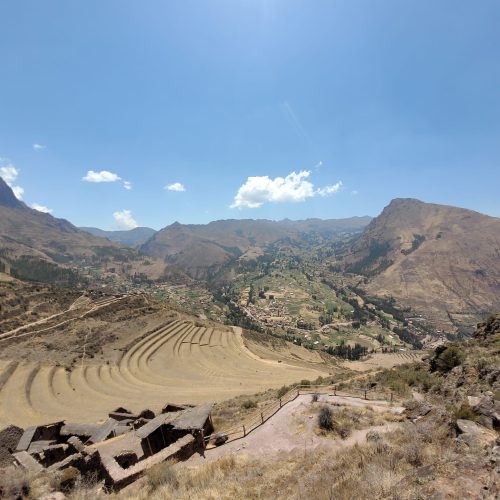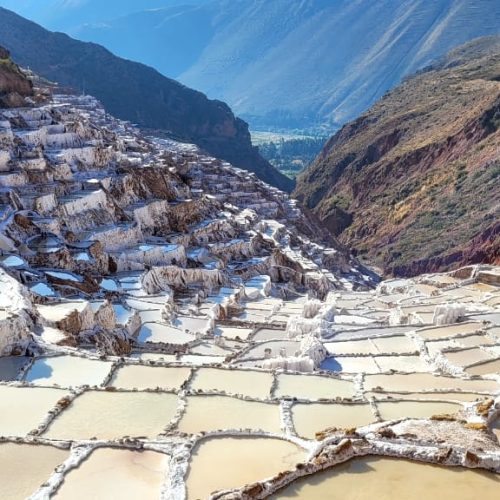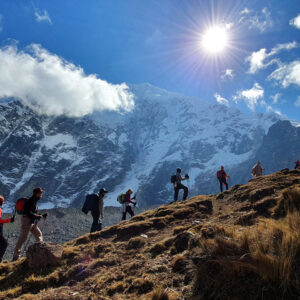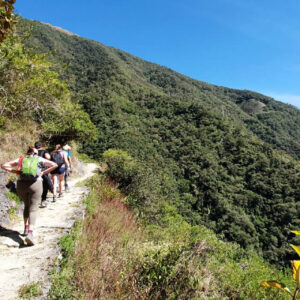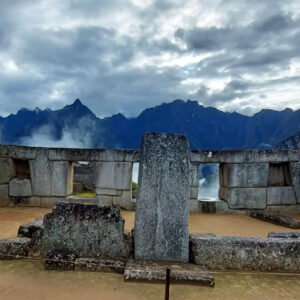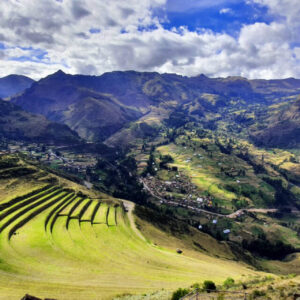Peru’s Sacred Valley has breathtaking natural beauty, ancient ruins, and mystical energy. It’s a place where the past and present collide, and visitors can connect with a rich cultural heritage spanning thousands of years.
This area is a treasure of history and spirituality, from the awe-inspiring Machu Picchu to the lesser-known but equally fascinating sites like Pisac and Ollantaytambo. In this article, we’ll explore the magic of the Sacred Valley, learning about the Inca civilization and the spiritual practices that continue to thrive in the region today. We’ll discover hidden gems, meet local artisans, and indulge in traditional cuisine. Whether you’re a history buff, a spiritual seeker, or simply an adventurer, the Sacred Valley has something to offer everyone.
The Significance of the Sacred Valley in Peruvian History
The Sacred Valley is a lush, green valley in Peru’s Andean highlands. The valley was considered sacred by the Inca civilization, who believed it to be the center of the world. The Incas chose the location for its fertile soil, strategic location, and its proximity to the Urubamba River, which they believed to be a sacred river. The valley was also an important agricultural hub for the Incas, who cultivated maize, potatoes, and other crops. The Incas built magnificent cities and temples in the valley, which were used for religious and administrative purposes.
The valley was also crucial for the Spanish conquistadors, who sought to conquer and colonize the region. The Spanish established many towns and cities in the valley, many of which still exist today. Today, the Sacred Valley is a popular destination for tourists who explore its ancient ruins, learn about its rich history, and connect with its spiritual energy. The valley is also home to a vibrant local community, who continue to practice traditional customs and celebrate their cultural heritage.
Exploring the Sacred Valley’s sacred sites – Machu Picchu, Ollantaytambo, Pisac, and Moray
The Sacred Valley is home to several sacred sites that are must-visit destinations for any traveler to Peru. These sites include Machu Picchu, Ollantaytambo, Pisac, and Moray. Each site offers a unique glimpse into the history and culture of the Inca civilization, and each has its unique charm and beauty.
Machu Picchu
Machu Picchu is the most famous of all the Inca ruins in Peru. This ancient city sits atop a mountain surrounded by steep cliffs and lush vegetation. The city was built in the 15th century and was abandoned shortly after the Spanish conquest. It was rediscovered in 1911 by the American archeologist Hiram Bingham and has since become one of the most popular tourist destinations in the world.
Visitors to Machu Picchu can explore the ancient city, hike the Inca Trail, and take in the breathtaking views of the surrounding mountains. It’s important to note that Machu Picchu is a popular destination, so booking tickets in advance is recommended.
Ollantaytambo
Ollantaytambo is a small town in the Sacred Valley and is home to one of the best-preserved Inca towns in Peru. The town features narrow streets, stone buildings, and a magnificent fortress built by the Incas. The fortress was used to defend against the Spanish during the conquest and is a testament to the ingenuity and engineering skills of the Inca civilization.
Visitors to Ollantaytambo can explore the town, visit the fortress, and hike the nearby mountains. The town is also a good base for exploring other nearby Inca ruins, such as Pisac and Moray.
Pisac
Pisac is a small town in the Sacred Valley and is home to a magnificent Inca ruin that sits atop a hill overlooking the town. The ruin features impressive stone terraces, temples, and a cemetery. The town itself is also worth exploring, with its narrow streets, colorful markets, and traditional architecture.
Visitors to Pisac can explore the Inca ruins, hike the nearby mountains, and shop for local crafts and textiles in the town’s markets. The town is also a good base for exploring other nearby Inca ruins, such as Ollantaytambo and Moray.
Moray
Moray is a unique Inca ruin located in the Sacred Valley. The site features a series of circular terraces that were used for agricultural experiments by the Incas. The terraces vary in temperature and provide a controlled environment for growing crops. The site is a testament to the Inca’s ingenuity and knowledge of agriculture.
Visitors to Moray can explore the terraces, hike the surrounding mountains, and learn about the Inca’s agricultural practices.
When is the best time to visit?
The best time to visit the Sacred Valley is during the dry season, which runs from May to September. The weather is mild and dry during this time, making it ideal for exploring the ancient ruins and hiking the surrounding mountains. The wet season, which runs from October to April, can be rainy and muddy, making it more challenging to explore the ruins.
It’s also important to note that the Sacred Valley is a popular destination, so booking accommodations and tours in advance is recommended to avoid disappointment.
How to get there?
The Sacred Valley is located in the Andean highlands of Peru, approximately 600 miles southeast of Lima. The easiest way to get to the Sacred Valley is to fly into Cusco, which is the nearest major city. Visitors can take a bus or taxi to the Sacred Valley from Cusco.
It’s also possible to take a train to the Sacred Valley from Cusco, which is a scenic and comfortable way to travel. The train journey takes approximately two hours and offers stunning views of the Andean mountains and valleys.
Accommodation options in the Sacred Valley
The Sacred Valley offers a range of accommodation options to suit all budgets and preferences. There’s something for everyone in the valley, from luxury hotels to budget hostels.
Some popular options include the Belmond Hotel Rio Sagrado, which offers luxurious rooms and stunning views of the Urubamba River, and the Tambo del Inka Resort and Spa, which features a world-class spa and outdoor pool.
For budget travelers, several hostels and guesthouses in the valley offer affordable accommodations and a chance to connect with other travelers.
Conclusion
The Sacred Valley is a truly magical destination that offers a unique blend of history, spirituality, and natural beauty. From the awe-inspiring Machu Picchu to the lesser-known but equally fascinating sites like Pisac and Moray, the valley is a treasure of ancient ruins and cultural heritage.
Visitors to the valley can explore the Inca ruins, hike the surrounding mountains, and connect with the local community. The valley is also home to a vibrant spiritual community that continues practicing traditional customs and celebrating its cultural heritage.
Whether you’re a history buff, a spiritual seeker, or simply an adventurer, the Sacred Valley has something to offer everyone. So, add the Sacred Valley to your travel bucket list and discover the magic of this enchanting land.

